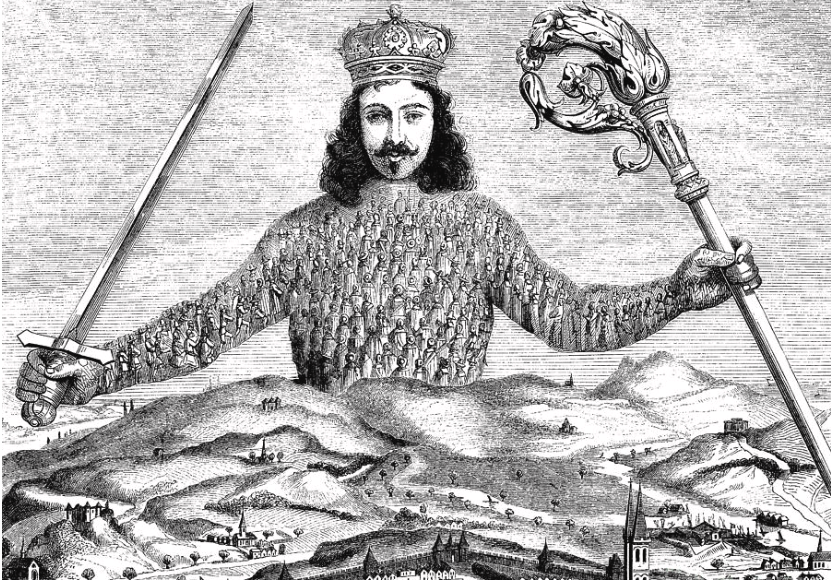

The Hobbesian theory of language rules out the possibility of proving God's existence, but Hobbes seems to have believed in a Designer to whom a prudent man would offer worship. Hobbes agreed with Sir Francis Bacon that ‘atheism’ was typically caused by bad religion (that is, by ‘superstitions’ designed to serve the interests of the clergy). This article disentangles the link between his ‘God’ and his ‘religion’ and in so doing illuminates what Stuart writers meant by ‘atheism’. It well illustrates Hobbes’s theory that, “A multitude of men, are made one person, when they are by one man, or one person, represented so that it be done with the consent of every one of that multitude in particular” (Hobbes, Leviathan, I.16.13).Hobbes seems to have believed in ‘God’ he certainly disapproved of most ‘religion’, including virtually all forms of Christianity.

One discovers, in this image, the notion of Sovereign Authority as an Artificial Person built up from the consent of the multitude of Natural Persons. In the grand center is the figure of the Sovereign King, whose body is both literally and figuratively constituted by the blurring-together individual bodies of the citizenry, the co- signers of the social contract, who face away from the viewer and towards the Sovereign. This iconic image offers multiple representations that provide the viewer with access to many of the core themes of the Leviathan: At the bottom are juxtaposed competing, or perhaps balancing, sources of Sovereign Authority-images of Ecclesiastical Authority (on the right) and Human/Temporal Authority (on the left). The famous frontispiece of Hobbes’s Leviathan was inspired by the anamorphic art form, which originated during the Renaissance and remained popular during Hobbes’s lifetime in the 17th century.


Frontispiece of Thomas Hobbes’ Leviathan, by Abraham Bosse, with creative input from Thomas Hobbes, 1651


 0 kommentar(er)
0 kommentar(er)
